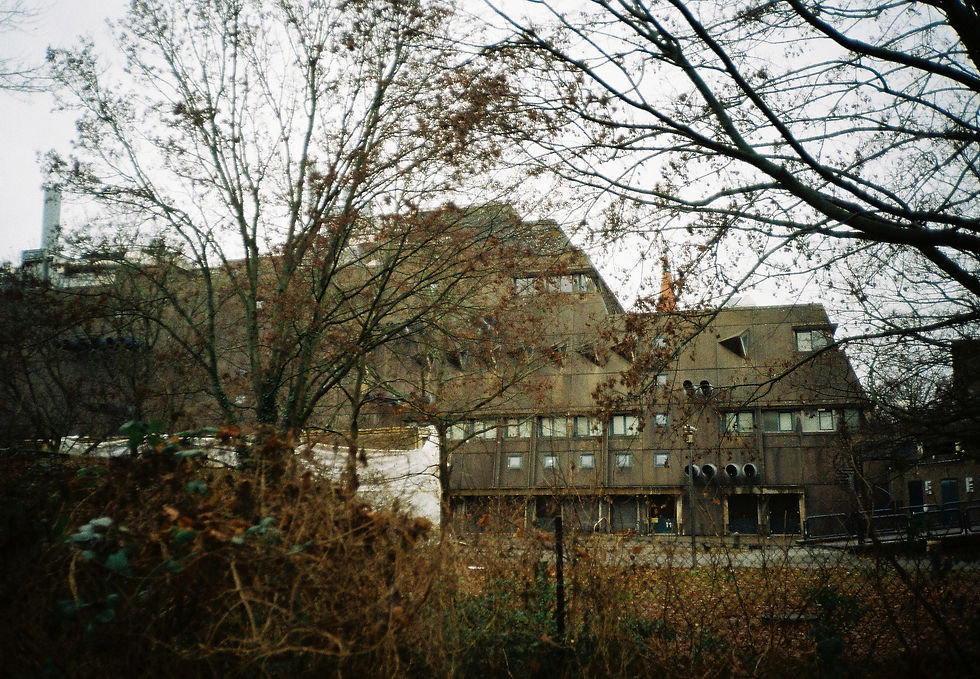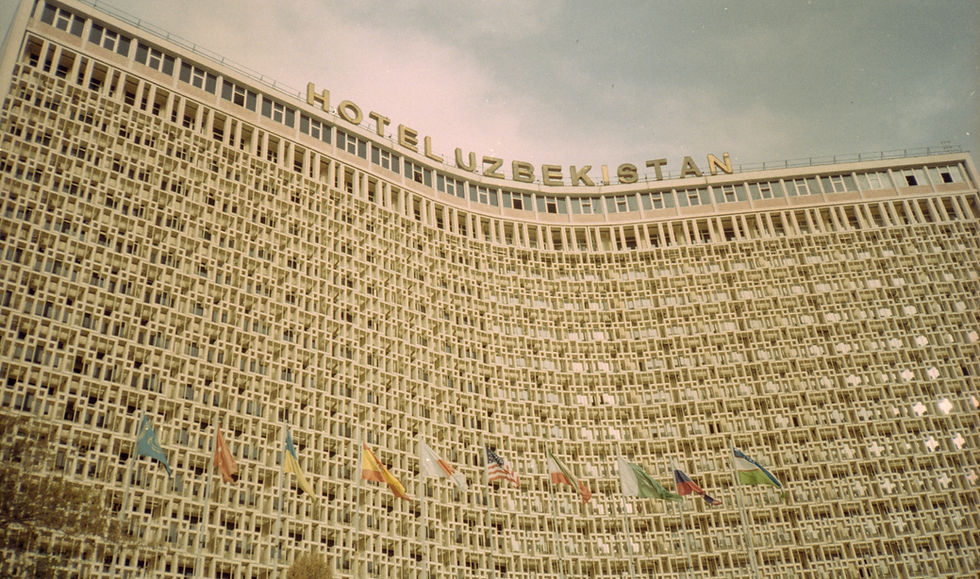Mäusbunker: Berlin’s Brutalist Behemoth
- Caravan Media Travels

- Aug 21, 2025
- 2 min read
Got a spare few hours in Berlin? An afternoon off? Or perhaps just want to check one more architectural masterpiece in the German capital before heading back home to the grind. As European brutalist wonders go, it doesn’t get much better than the Mäusbunker, also known as the Research Institutes for Experimental Medicine. Go and take a look… now.

Designed by Gerd and Magdalena Hänska and completed in 1981, this 9-storey dystopian nightmare rises like a concrete monolith, an Orwellian fort or prison beyond the imagination of even the Cold War’s most fringe literary fantasies. Dark and inscrutable, the Mäusbunker is a fortress against a world imagined in paranoia. Its jagged, outward-slanting walls seem less like any form of conventional architecture and more like the exoskeleton of some vast, dormant machine. A series of massive, protruding exhaust pipes line the upper edges of the building.

Long, narrow windows slice through the concrete in irregular patterns, resembling defensive slits or air vents, whilst long and uniform chimneys protrude out of the roof, as if on a major steam-powered ocean vessel - which given the sheer scale of the Mäusbunker, wouldn’t be a major surprise.

Work on the Mäusbunker began in 1971, and when inaugurated, it functioned as a site for live animal experimentation under the Freie Universität Berlin in Steglitz-Zehlendorf - a purpose most fitting with its inhuman appearance. Located a stone’s throw from the Benjamin Franklin Medical Centre (also worth checking out for any brutalist fans), the facilities were tasked with the development and testing of vaccines and new medications. Later on in the building’s life, it served as a research institute for experimental medicine as part of the Charité Universitätsmedizin Berlin.

Perhaps even stranger than the building’s appearance and purpose, is its location. You’ll find the colossus Mäusbunker tucked away in the leafy and highly agreeable Southwest Berlin suburb of Lichterfelde, on Krahmerstraße 6. A calm, quiet, normal and slightly up-market area of the city, seldom found in English language travel guides - a stark contrast to the building’s brutal credentials.

Long derided by some members of the Berlin public for its Cold-War paranoia aesthetics and controversial animal welfare credentials, the future of the Mäusbunker remained uncertain for some time. But in recent years, architecture lovers have come to appreciate the site as one of the foremost examples of European brutalism.

Following the 2020 decision to send in the bulldozers to demolish the iconic site deemed surplus to requirements, a grassroots campaign and petition was founded the same year. In 2023, these efforts bore fruit, with the German Department of Heritage Protection officially listing the Mäusbunker as a historical site - preserving its existence and legacy as one of Berlin’s most richly unique and offbeat architectural oddities - definitely not one to be missed.






Comments